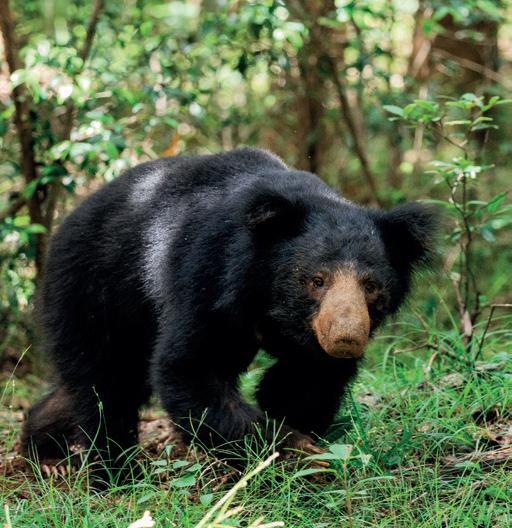
3 minute read
Sri Lanka: Coast by Coast
Guiding light Make your way down the Sri Lankan coastline with Galle Fort Lighthouse leading your way
With varied beaches, big (and small) wildlife and sense-tantalizing trails, Sri Lanka’s coast is justly fabled – but which region is best for you?
Advertisement
Explorer Marco Polo called Sri Lanka ‘the most beautiful island in the world’ and it’s easy to see why. Sri Lanka specialist Alison Hall has just returned from a research trip to the country, and shares her coastal travel tips.
THE SOUTH & SOUTHWEST COAST Why go? For Sri Lanka’s best beach hotels – everything from sleek, international resorts to smaller, boutique properties. The sand also ranges from bronzed and palm-fringed to rose-gold and shell-speckled. With rough seas, swimming isn’t always possible; have a dip in your hotel pool instead and go to the beach for long ruminative walks, Indian Ocean-gazing and sunset-viewing.
You’ll find cinnamon and low-level tea plantations to explore, too, while the national parks of Udawalawe (for elephant) and Bundala (for coastal birdlife) are possible to visit in a day. In Kalutara, there’s the sacred Kalutara Bodhiya – its white dagoba is one of the few completely hollow stupas in the world. Plus, if you like architecture, this region is home to one of Geoffrey Bawa’s celebrated properties.
If you only do one thing… Visit Galle, with its elegantly restored smorgasbord of Portuguese, Dutch and British colonial buildings. Try a traditional Sri Lankan mask painting workshop in
Galle Fort, or simply wander around the streets of boutique shops and restaurants.
Where to stay Mosvold Villa, where you can dine alfresco, overlooking the sea. The beach here is slightly more protected, making it possible to swim.
When to go December to April – although this is the busiest time, you stand a good chance of shower-free days.
THE EAST COAST: Trincomalee & Pasikuda Bay Why go? For Sri Lanka’s most striking beaches – wake at sunrise for a particularly photogenic vista. There’s some good snorkeling off Pigeon Island, near Trincomalee, where you can see colorful corals and clownfish (decent snorkeling spots are a rarity in Sri Lanka, as its strong sea currents make for poor visibility.) And then there are the visiting whale pods…
If you only do one thing… Make it whale watching: blue and sperm whales flock here in high numbers between May and October.
Where to stay Jungle Beach: the sand is a deep yellow and fringed with thick vegetation, plus they’ll arrange trips to Pigeon Island. Alternatively there’s Uga Bay at Passikudah Bay. The white-sand bay’s long underwater plateau provides a long stretch of shallows – good for families with water-loving children.
When to go From May to September, when the sea is generally calm.
THE NORTHWEST COAST: Kalpitiya Peninsula Why go? For Sri Lanka’s most active beach stay. It’s the country’s prime spot for kite surfing, diving and sperm whale spotting – the species visit this coastline between November and April, joining the spinner dolphins who hang out here nearly all year long.
Across the peninsula, are the leopards and sloth bears of Wilpattu National Park.
Nature’s call Fishermen take to the beach on the Kalpitiya peninsula; (below right) spy rare sloth bears in Wilpattu National Park, in the northwest

If you only do one thing… Given that this is a kitesurfing capital, it’d be a shame not to try it: beginner lessons are available.
Where to stay Palagama Beach. Its cabanas are the epitome of rustic, desertisland-style comfort.
When to go For kitesurfing, between May and October. The weather’s generally drier than the east coast, so you can widen your travel window to include April and November too.

Big sightings Spy pods breaching in Sri Lankan waters on a whale watching trip; (right) calming beaches
DELFT ISLAND, THE JAFFNA PENINSULA
If you’re looking for the most off-thebeaten-track beaches in the country, you’ll find them just off this isolated peninsula – one of the best discoveries from my recent trip. The sea is bathwater-warm and although you’re restricted to a day trip (there are no hotels here), you can combine a visit with time in the coastal city of Jaffna, with its Dutch fort, restored library and Hindu temples.












